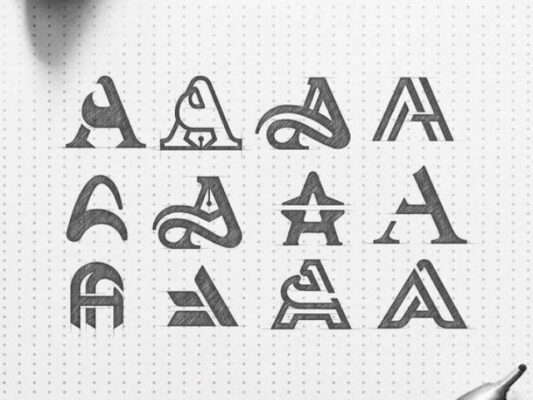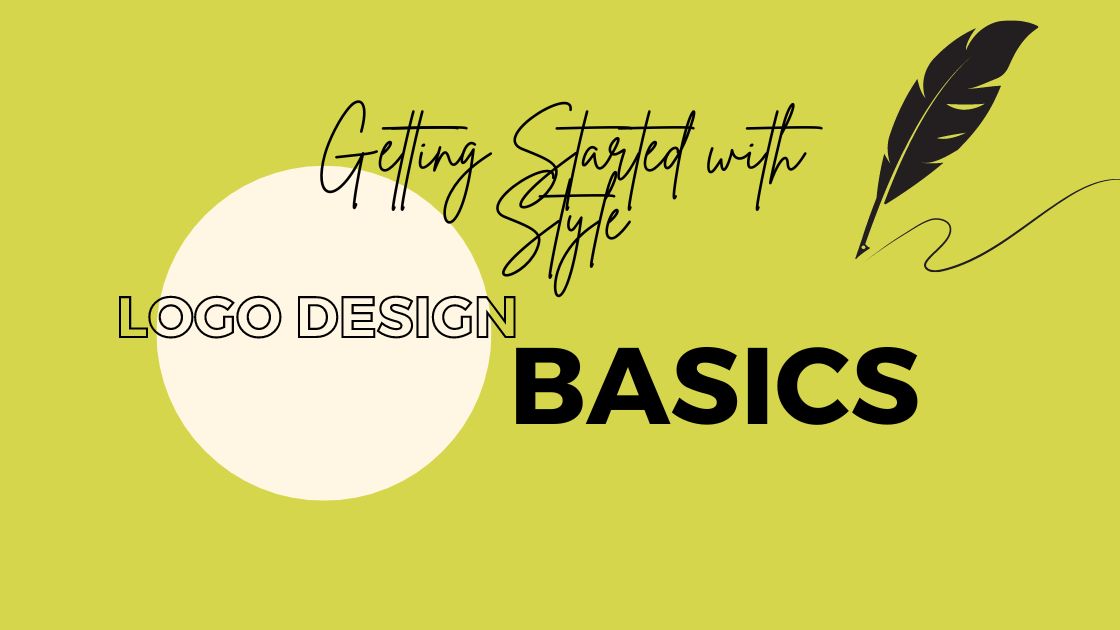Logo design is a fundamental aspect of branding and visual identity. A well-designed logo serves as the face of a brand, conveying its essence and values in a single visual representation. Whether you’re a seasoned designer or a newcomer to the world of graphic design, understanding the basics of logo design style is essential for creating impactful and memorable logos.
In this article, we’ll delve into the foundational principles of logo design style, exploring key elements such as typography, color, shape, and composition. By mastering these principles, you’ll be equipped with the knowledge and skills needed to craft logos that captivate audiences, foster brand recognition, and leave a lasting impression.
Contents
- 1 What is a Logo
- 2 Some notes need to be understood about logos. Logo isn’t:
- 3 The Most Important Steps in Logo Design (Logo Design Basics)
- 3.1 Understanding the Importance of a Logo
- 3.2 Defining Your Brand Identity
- 3.3 Finding Design Inspiration
- 3.4 Checking Out the Competition
- 3.5 Choosing Your Design Style
- 3.6 Selecting the Right Type of Logo
- 3.7 Paying Attention to Color
- 3.8 Picking the Right Typography
- 3.9 Communicating with Your Designer
- 3.10 Evaluating Your Options
- 3.11 What Not to Do in Logo Design
- 3.12 Integrating Your Logo into Your Brand
- 4 Conclusion
- 5 Related Post
What is a Logo
A logo is a graphic symbol or design utilized to represent a company, organization, or brand, along with its products, services, and personnel. It serves as a visual identifier, helping individuals recognize and recall the entity it represents. Essentially, a logo acts as the face of a business, leaving a lasting impression on viewers.

Furthermore, a logo offers an opportunity to convey a message about the organization it represents. For instance, Amazon’s logo features a smiley arrow, indicating the extensive range of products available from “A-Z” and symbolizing customer satisfaction.
However, it’s important to note that while a logo can carry deeper significance, it isn’t obligatory. Many businesses place excessive importance on their logos, expecting them to fulfill multiple roles beyond identification. In reality, a logo is just one aspect of a company’s overall branding strategy.
Some notes need to be understood about logos. Logo isn’t:
Your brand
Your brand encompasses more than just a logo; it encompasses your reputation, the perceptions associated with your name, and the emotions evoked in customers’ minds. It’s shaped by numerous interactions with your audience, extending far beyond a mere visual symbol.

Your visual identity
While logos are integral components of visual branding, they’re only a part of the broader visual identity system. This system encompasses elements like color schemes, typography, imagery, and layout, all of which work together to create a cohesive brand image.
An indicator of success
A well-designed logo won’t guarantee the success of a business, nor will a poorly designed one necessarily lead to failure. Success is determined by various factors, including the quality of products or services, customer satisfaction, and ethical standards, among others.
In essence, while a logo is an important aspect of branding, it should be viewed as just one component of a comprehensive brand strategy.
The Most Important Steps in Logo Design (Logo Design Basics)
Understanding the Importance of a Logo
Your logo is the face of your brand, making it crucial to create a great one. It’s the first impression customers will have of your business, conveying information about your brand and determining if it resonates with them.
Defining Your Brand Identity
Your logo should reflect your brand’s personality. Understanding your brand’s core values, uniqueness, and target audience is essential in guiding your design choices.
Finding Design Inspiration
Brainstorming and creating mood boards are effective ways to gather design inspiration. Consider your brand’s story, values, and target audience when exploring design ideas.

Checking Out the Competition
Analyze your competitors’ logos to understand what works well with your audience and how you can differentiate your brand.
Choosing Your Design Style
Decide on a design aesthetic that best represents your brand, whether it’s classic, retro, modern, fun, or handmade.

Selecting the Right Type of Logo
Choose from lettermarks, wordmarks, pictorial marks, abstract marks, mascots, combination marks, or emblems based on what aligns with your brand identity.
Paying Attention to Color
Colors evoke emotions and meanings, so select a color palette that resonates with your brand’s message and target audience. Consider color combinations like complementary, analogous, or triadic for a harmonious design.

Picking the Right Typography
Typography plays a crucial role in logo design. Choose from serif, sans serif, script, or display fonts based on your brand’s personality and style.
Communicating with Your Designer
Effective communication with your designer is key to creating a logo that aligns with your vision and brand identity. Provide detailed feedback and collaborate closely throughout the design process.
Evaluating Your Options
Assess your logo options based on their uniqueness, memorability, versatility, timelessness, and appeal to your target audience.
What Not to Do in Logo Design
Avoid common pitfalls like using clichés, creating overly complicated designs, following trends blindly, or compromising on quality.
Integrating Your Logo into Your Brand
Once you have your logo, use it as the foundation for your brand’s visual identity across all marketing materials, ensuring consistency and a cohesive brand image.
Conclusion
In conclusion, a logo serves as a visual representation of a company or organization, aiding in recognition and recall among its audience. While it can convey meaning and make a statement about the brand it represents, it’s essential to recognize that a logo is not the entirety of a brand nor a guarantee of success. Rather, it is part of a larger branding strategy that includes elements such as brand identity and customer experience. Understanding the role of a logo within the broader context of branding can help businesses effectively leverage its power while focusing on other crucial aspects of their brand development and success.
Related Post
Top 13 Elegant Script Fonts for Wedding Invitations
Top 15 Handwriting Fonts Popular
Ways to Improve Drawing Made Easy

